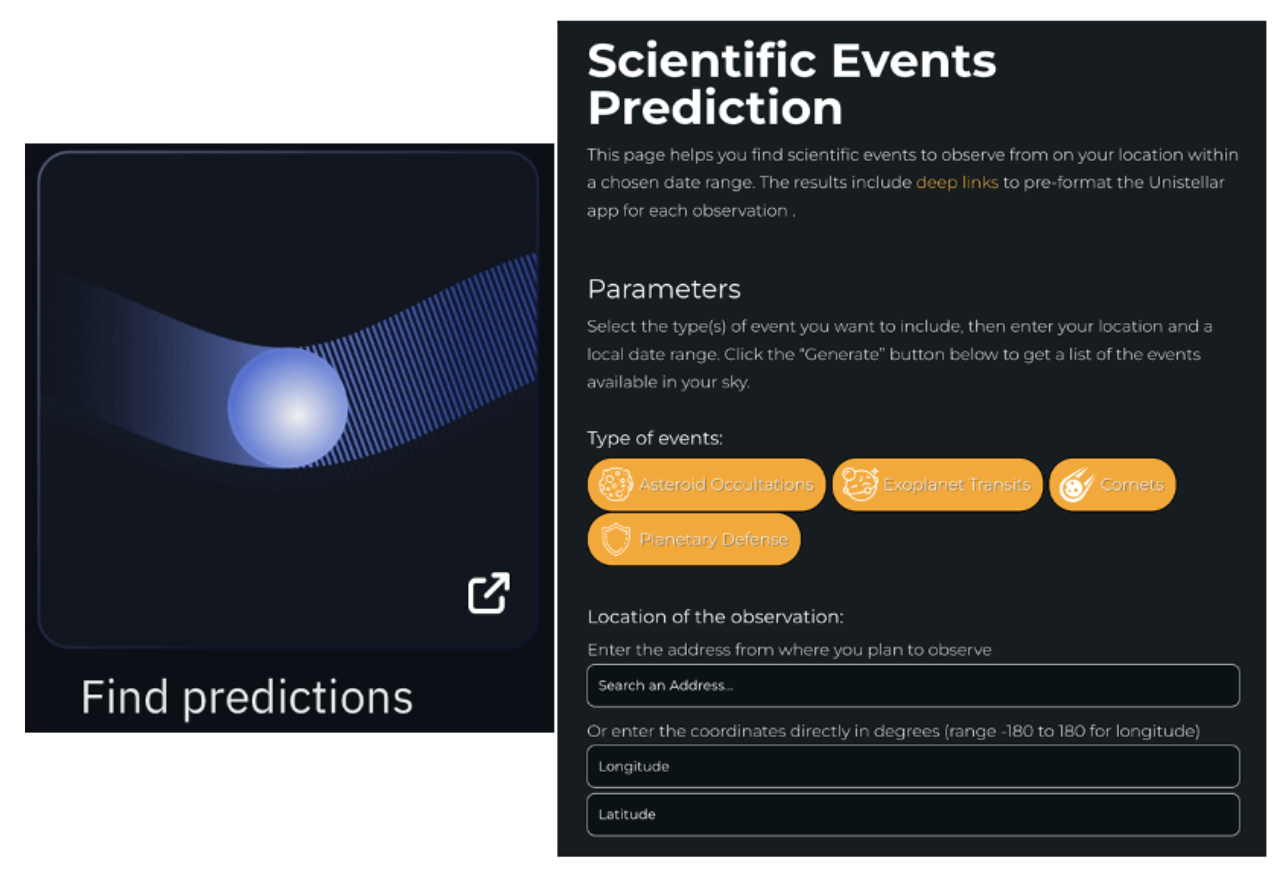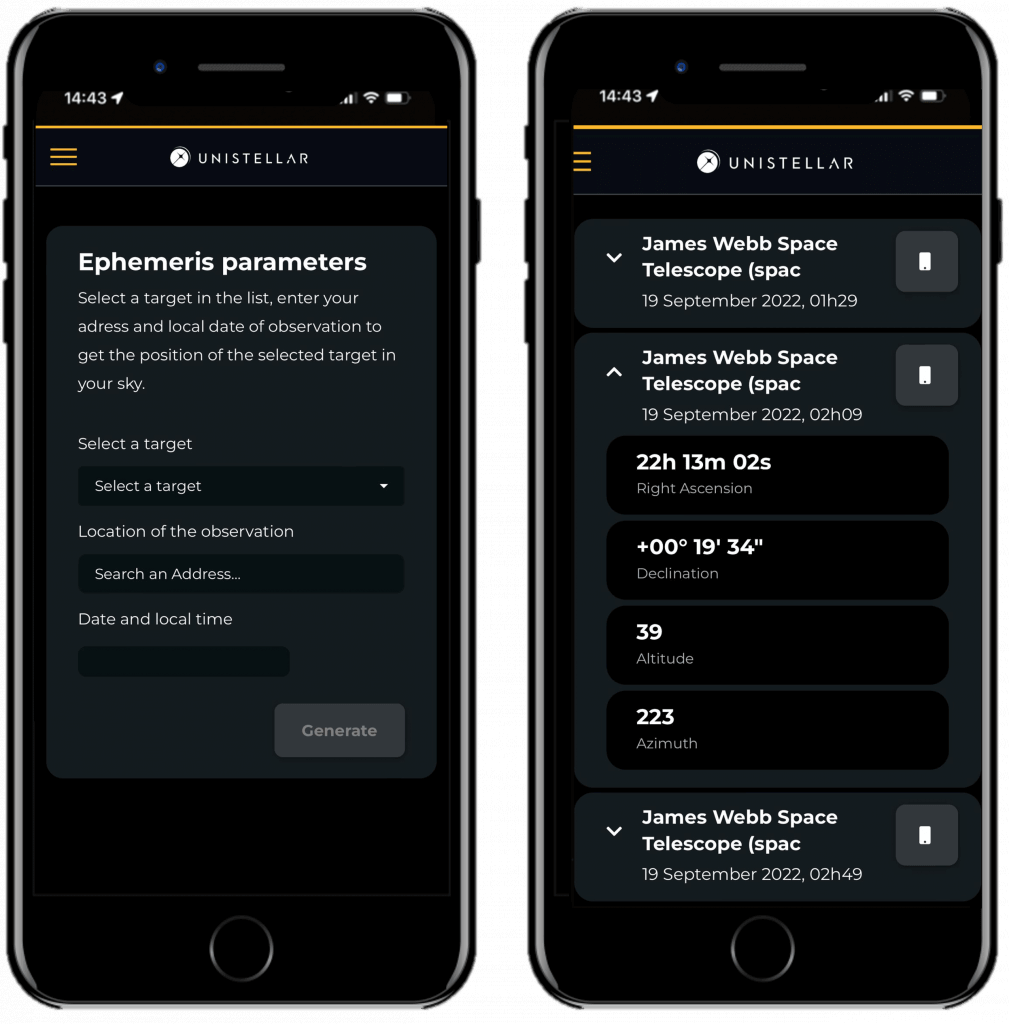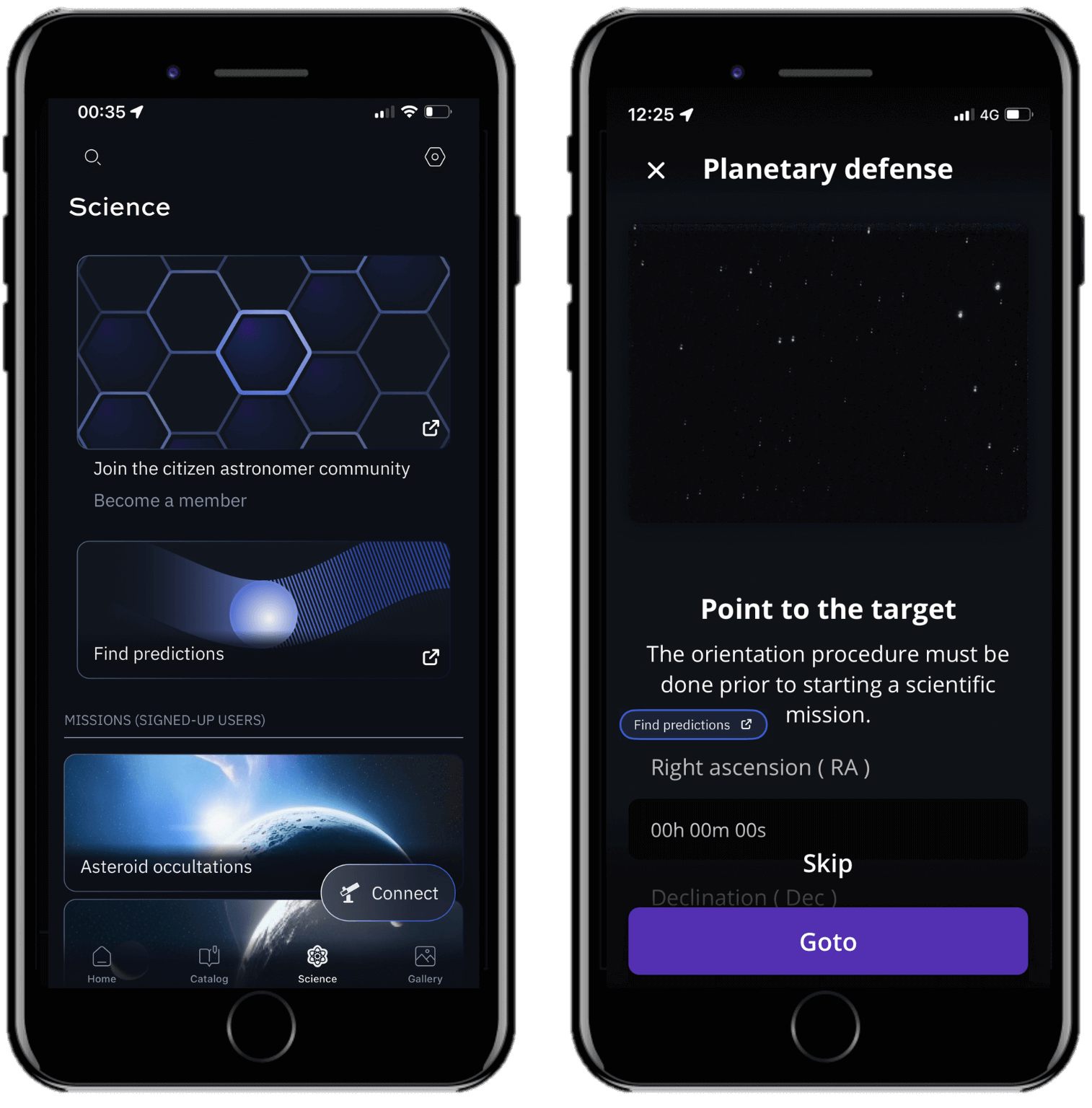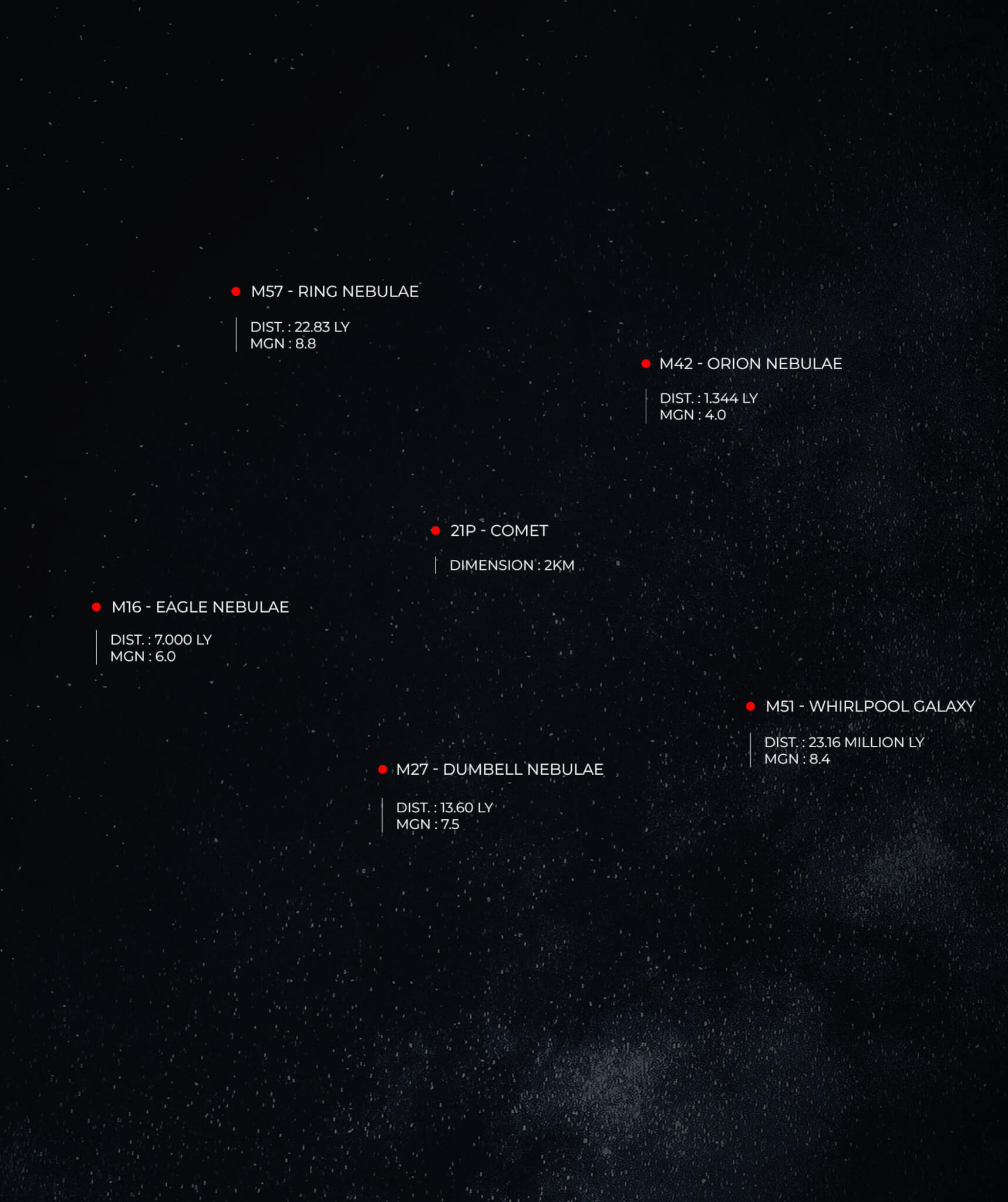Planetary Defense
Tutorial
TUTORIAL TO BECOME A PLANETARY GUARDIAN
First time observing a Near-Earth Object? Read this page to master your Unistellar telescope and join our team of Planetary Guardians.
PRE-OBSERVATION
1 – Select Your Mission
The passage of a near-Earth Asteroid (NEA) is a unique event to record, and to observe one you need to be in a specific area on Earth. First, you need to select a mission visible to your location. This is easy using the Unistellar Scientific Events Prediction Page! This page will show you all of the asteroids visible to your observing site within a given date range. It is also accessible through the Unistellar app Home or Science menu by clicking on the “Find Predictions” icon.
Note that asteroids are fast-moving targets to observe. Their coordinates in the sky depend on the location and date of the observation. If you know which NEA you want to observe and it is in the Unistellar App Catalog, then you will have access to the coordinates from the app and you can skip to Step 4. The recording parameters (Duration, Exposure Time, and Gain) that you will need to do a science observation, as instructed later in this tutorial, are always given on the Planetary Defense Missions Page.
However, if the NEA is not in the Unistellar App Catalog, you must use the Predictions & Moving Target Ephemeris pages, as described below in Steps 2 & 3, to compute its coordinates. The Predictions page is useful in either case to show you what comets are visible to your location!

2 – READ THE PREDICTION
To use the Predictions page to observe NEAs, first make sure that the “Planetary Defense” button is highlighted in yellow. In the “Location of the observation” box, input the address or coordinates of the location on Earth from which you will be observing. Lastly, in the “Starting Date” box select the date and time you would like to start searching for comets to asteroids — this is important because NEAs are moving targets.
You are now ready to search for missions by clicking the “Generate” button, which will display a table of events visible to your location.
After you have clicked “Generate,” a table of all NEA targets visible during the provided date range will be displayed; however, you now need to tailor them to your specific observing location. Each row will include the target name and your input Starting Date, as well as a Link located in the last icon in the row. Click this Link to go to the Ephemeris Page and generate coordinates tailored to your location and time.

3 – Moving Target Ephemeris (optional)
Each line on the Moving Target Ephemeris page‘s list corresponds to the position of your target at a specific time between your Starting Date and 8 hours later, in increments of 20 minutes. If the target is visible from your location, you will be able to click on the smartphone icon, which contains a Deep Link that will open your Unistellar App and fill the Planetary Defense tab with the recording parameters. If your target is not visible, a crossed-out eye icon will appear instead. You can click on a row of the list to reveal the recording parameters and additional information.

OBSERVATION
4 – 10 Minutes Before Your Mission
Once your Unistellar telescope is set to observe the night sky, you can use the scientific mode of the Unistellar App.
It is time to point to your target. You have two options depending if the near-earth object is in the App Catalog or not.
A.The asteroid is in the App Catalog: Open your Unistellar App, in the Catalog, enter the name of your asteroid, select it and click on Goto. Once the goto is Done, click on the Science menu and select the Defense tab. Skip the step that prompts you to Point to the target. Enter the Record duration, Exposure time, and Gain and click on Save.
B. The asteroid is NOT in the App Catalog: The quickest way to find your target is to use your smartphone to click on the Deep Link generated with our Moving Target Ephemeris tool that you read about in the previous section. It will automatically open the Defense tab of your Unistellar App to enter the coordinates of the target and its recording parameters. If the Right ascension and Declination box are filled with the correct coordinates, click on Goto to point to your target. Once Goto is done, if the Record duration, Exposure time, and Gain are correct, you can click on Save.


5 – Launch Observation
At the start time, click on the Record button to start the observation.
During the observation keep an eye on the asteroid, as it may move through the frame. Once the observation is over, a final message appears: “Recording complete”
POST-OBSERVATION
6 – Share your data
Once you are at home, please upload your data to our server. Our team of scientists will analyze your observation to check if you detected the occultation. If you need help, please read these guidelines on “how to upload my data”.
7 – Tell Unistellar you participated
To make sure your contribution is properly processed and you are credited for the result, always fill out this Planetary Defense Observation Report. It asks for your name, the serial number of your telescope, and the name of the scientific mission you just accomplished.
We will send you the result of your scientific mission through our Slack communication platform within 24 hours.
Great Work, Citizen Astronomer.

